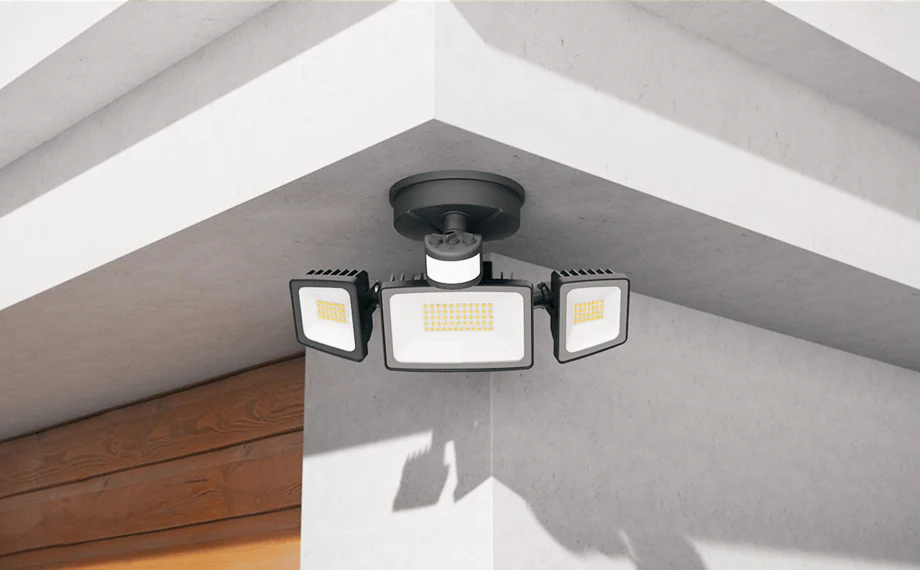LED motion sensor lights have become increasingly popular in recent years, offering enhanced security, convenience, and energy efficiency for both residential and commercial settings. These innovative lighting solutions combine LED technology with motion sensors to detect movement and provide illumination when needed. Understanding the mechanics behind LED motion sensor lights is essential for maximizing their effectiveness and ensuring optimal performance. In this article, we will delve into the intricacies of how these lights work, the components involved, and the various types available in the market.
Table of Contents
The Basics Of LED Motion Sensor Lights
The operation of LED motion sensor lights is based on a premise that is both straightforward and complex: these lights make use of motion sensors to identify whenever there is movement in their immediate surroundings and then activate the LED light source accordingly. The fact that they can perform this task makes them perfect for applications such as lighting for outdoor security, lighting for pathways, and lighting solutions that save energy.
The Components
- LED Light Source: The LED, which stands for light-emitting diode, is the component that sits at the core of every LED motion sensor light. Because of their great efficiency and extended lifespan, light-emitting diodes (LEDs) are the most popular option for use in contemporary lighting applications. LED motion sensor lights can give illumination that is both bright and efficient in terms of energy consumption.
- Motion Sensor: One of the most important components that is responsible for detecting movement is the motion sensor. Changes in the infrared light that is emitted by things that fall inside its detection range are what it uses to function. If the sensor detects motion, it will activate the light, which will then illuminate the surrounding area.
- Control Electronics: The motion sensor and the LED light source are both controlled by control electronics that are part of LED motion sensor lights. These electronics are located behind the scenes. Adjusting the sensitivity, controlling the duration of light, and managing power are all functions that are managed by these electronic components.
How Led Motion Sensor Lights Work?
When a person or object enters the detection range of an LED motion sensor light, the motion sensor detects the change in infrared radiation. This triggers the control electronics to activate the LED light source, instantly illuminating the area. The light remains on for a predetermined duration, typically adjustable to suit specific requirements, before automatically turning off again when no further motion is detected. This intelligent functionality ensures that the light is only active when needed, maximizing energy efficiency and minimizing unnecessary illumination. To ensure the functionality of the LED motion sensor lights, it’s essential to regularly test a motion sensor and replace it if necessary.
Types Of Motion Sensors
- Passive Infrared (PIR) Sensors: When it comes to LED motion sensor lights, the most frequent form of motion sensor that is utilized is the PIR sensor. Their operation is based on the detection of variations in infrared radiation that are brought about by the movement of warm objects, such as people or animals, that are within their range of view.
- Microwave Sensors: Microwave sensors can detect motion by continuously emitting microwave waves and then analyzing the reflections of those signals. Comparatively speaking, they are more effective than PIR sensors when it comes to detecting motion over a wider area and through obstructions.
- Dual Technology Sensors: Sensors that use dual technology combine infrared (PIR) and microwave technologies to improve dependability and reduce the number of false triggers. Dual technology sensors give better accuracy and sensitivity because there is a requirement for both technologies to detect motion before the light is activated.
Applications Of LED Motion Sensor Lights:
LED motion sensor lights find wide-ranging applications in both residential and commercial settings:
- Outdoor Security Lighting: It is common practice to utilize LED motion sensor lights to illuminate outside areas such as driveways, walks, and gardens. These lights offer an increased level of protection by discouraging potential burglars and alerting residents to any activity that may occur.
- Indoor Lighting: Indoor environments can benefit from the convenience and energy savings offered by LED motion sensor lights. These lights automatically illuminate rooms when occupants enter and switch off when they depart, thereby minimizing the amount of energy that is wasted in areas that are not occupied.
- Commercial And Industrial Lighting: In commercial and industrial settings, LED motion sensor lights are utilized to increase safety, enhance security, and optimize energy efficiency in locations such as warehouses, parking lots, and manufacturing facilities. These objectives are accomplished through the utilization of these lights.
Benefits Of LED Motion Sensor Lights
- Energy Efficiency: As a result of the inherent efficiency of LEDs and the intelligent activation given by motion sensors, LED motion sensor lights consume a much lower amount of energy in comparison to conventional lighting technologies. Both your monthly energy bills and your influence on the environment will decrease as a result of this.
- Enhanced Security: LED motion sensor lights can provide fast illumination in reaction to movement, which helps to prevent burglars and increase security in residential as well as commercial properties thanks to their ability to provide instant illumination. Additionally, they notify inhabitants of the presence of visitors or potential dangers, which contributes to an overall improvement in safety.
- Convenience: Hands-free operation is available with LED motion sensor lights, which automatically switch on and off as required without requiring any participation from the user during the process. This convenience is especially useful in areas such as hallways, staircases, and entryways, among other places.
- Longevity: When compared to conventional lighting sources, LED motion sensor lights are meant to have a lifespan that is significantly longer than that of traditional lighting since LED technology offers a longer lifespan. Because of this, the amount of maintenance that is required during the lifetime of the product is lowered.
Conclusion
LED motion sensor lights represent a versatile and effective lighting solution for a wide range of applications, offering benefits such as energy efficiency, enhanced security, and convenience. By understanding the mechanics behind these lights and their components, users can make informed decisions when selecting and optimizing LED motion sensor lighting systems for their specific needs. As technology continues to evolve, LED motion sensor lights are poised to play an increasingly prominent role in shaping the future of lighting design and implementation.












